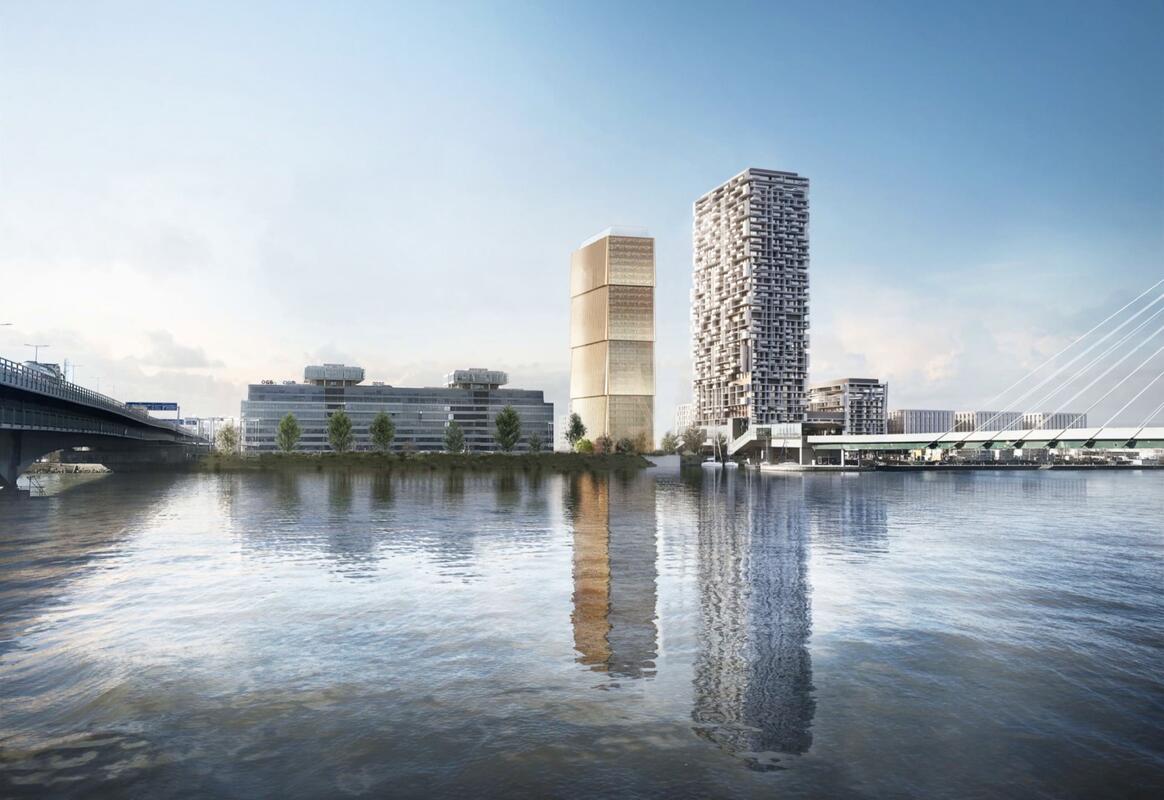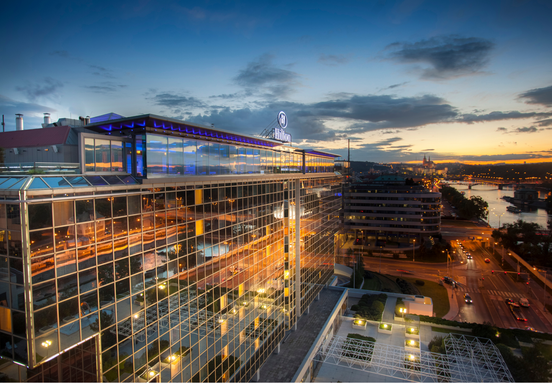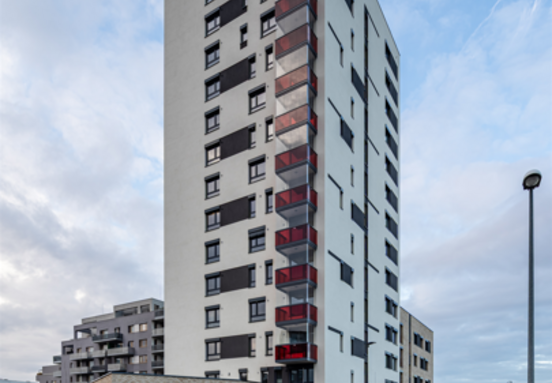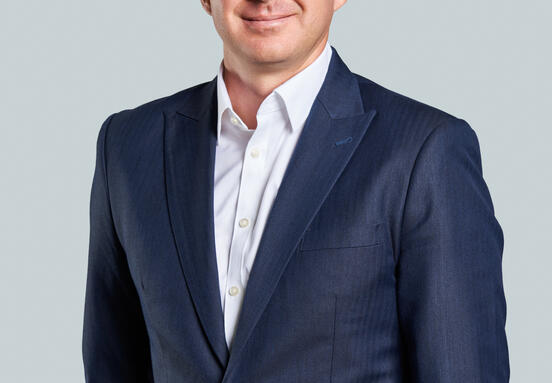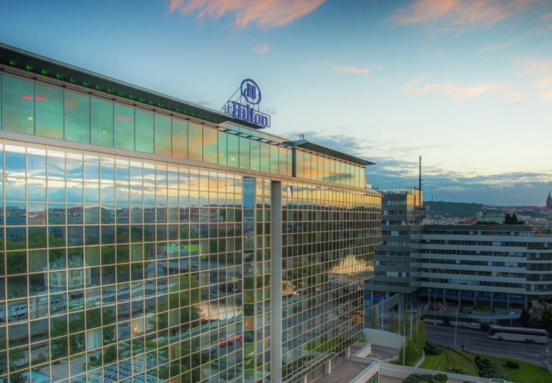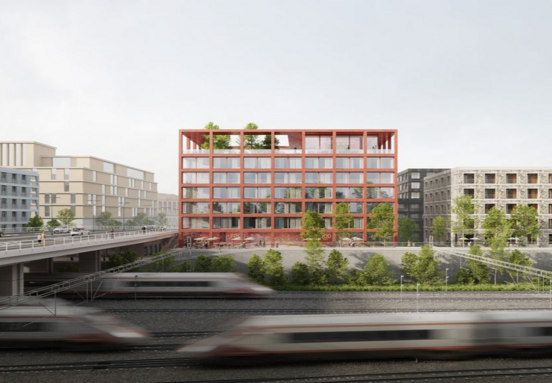In the construction industry, wooden buildings, with regard to environmental friendliness, are becoming an increasingly prominent trend. In the countries of Western and Northern Europe, residential and commercial projects are routinely built from wood, exceeding the height limit of several tens of meters. In the domestic construction of wooden buildings, a fundamental problem is the rigid legislation which, with regard to fire regulations, allows construction up to a maximum of four above-ground floors, or 12 meters fire height. In neighboring Austria, buildings with a wooden supporting structure up to six floors above ground are permitted as standard, i.e. up to 18 meters. In practice, in addition, individual approval is applied, thanks to which it is possible to build buildings many meters higher. "The regulations are the strictest in the Czech Republic. So far, they have not responded at all to the development of materials and technologies in wood construction," says Tomáš Krejčí, director of the design department of UBM Development Czechia. "In Austria, by contrast, there are already regulations directly for wooden buildings. The usual maximum height is a ground floor and six floors, where, depending on the type of building, wood is combined with reinforced concrete. It is always used for the basement and then mostly for the cores of buildings, or for the ground floor or the first floor. In the case of taller buildings made of wood, an engineering approach to the fire protection project is needed, which will also enable taller buildings. This is possible in Austria and Germany, but our standard in the Czech Republic does not yet allow it," adds Tomáš Krejčí.
European wooden buildings are also born in Prague
The Czech branch of UBM has extensive experience with wooden constructions. The central design department for the entire concern is located in Prague, which implements a number of large projects, including wooden buildings. Currently, for example, this is the 12-story Timber Peak building in Mainz, and design work has also begun on the large LeopoldQuartier wooden housing project in Vienna.
In both cases, the permitting process is significantly simpler than in the Czech Republic and takes place in the form of a one-stage building procedure. "The differences in approval processes in the Czech Republic compared to Western countries are profound. As a UBM projection that projects all over Europe, we have a direct comparison. Multi-page technical reports are generally not prepared abroad, but the most important project data are filled in forms. In addition, Prague is probably the worst place for building permits in our country," Tomáš Krejčí explains, adding: "In my opinion, a fundamental revision of the building code according to the German or Austrian model would help. In the case of ordinary constructions, it would therefore be a one-step process, eliminating the need for the relevant state administration bodies to express themselves, unifying all technical conditions into uniform building regulations and also limiting the participants in the construction process to those authorized. Digitization can make some things easier, but it won't solve the fundamental problems of our current system."
Examples of good practice from neighboring countries The parent company UBM Development AG currently has over 250,000 m2 of wooden buildings under construction. More than half are in the office segment, while the rest are in the residential segment. The latest acquisition worth €24.5 million is the Timber Marina Tower in Vienna with approximately 44,350 m2 of gross floor area, which the developer will build with a hybrid structure. Plans call for the construction of an administrative building with 32 above-ground and 4 underground floors, making it currently the tallest wooden skyscraper in the world. Its operation will be as environmentally friendly as possible thanks to the use of geothermal energy, underground water and the installation of photovoltaic panels. The building will comply with EU taxonomic regulations and ESG guidelines, and at the same time also aims to gain LEED Gold certification. The start of construction is planned for the 1st quarter of 2025.
The LeopoldQuartier project with roughly 75,000 m2 of floor space is also being built in Vienna. It will become the first urban district in Europe where buildings with a wood-hybrid structure will rise. The complex includes apartments and offices. Thanks to the consistent use of geothermal energy and photovoltaics, the project will be CO2 neutral during its operation. UBM plans to complete construction in mid-2025.
UBM is implementing two projects in close proximity in Mainz, Germany, the Timber Peak administrative building and the Timber View residential area. Timber Peak will offer approximately 9,500 m2 of gross floor space with flexible floor plans for office use, EV parking, a 5th floor terrace, a rooftop terrace with panoramic views, etc. Construction should begin at the end of 2023. The Timber View project was designed by einszueins Architektur ZT studio. The concept divides the new residential district into seven buildings with a total of 184 apartments, which together represent approximately 13,570 m2 of living space. Air-to-air heat pumps and photovoltaic systems on green roofs will ensure energy self-sufficiency. Construction is scheduled to begin in the 4th quarter of 2024.
The first sustainable wooden construction of apartment buildings in the modern history of Prague
UBM also started the construction of wooden buildings in the Czech Republic. "In 2022, we developed the Timber Praha project, which are cozy apartment buildings made of wood with a total of 62 apartments with layouts from 1+kk to 4+kk. The reinforced concrete basements began to be built in March 2023, we started the assembly of the wooden part at the end of June 2023, and now two houses are standing. The wooden part should be completely finished by the end of this year, and approval will take place in the second half of 2024," says Josef Wiedermann, CEO of UBM Development Czechia, adding: "This is the first project of its kind in Prague. In our country it is actually a pioneering undertaking, but from the point of view of Austria, Germany or the Scandinavian countries, it is already a common construction. UBM in the Czech Republic is very active when it comes to initiatives related to the larger construction of wood as an ecological material. We are in contact with a number of other experts in this field. In cooperation with representatives of some banks, developers and architects, we have also established a professional Platform for sustainable construction made of wood, and together we support the upcoming change in the fire standard, which will allow taller buildings to be built from wood in the future."
Living with good energy
Wooden buildings are the future of sustainable housing. Construction made of wood reduces the implementation time by up to half, thanks to the fact that it uses modern prefabrication technology. Wood is a durable and renewable natural material that has a positive effect on the human psyche. It creates a natural environment, maintains ideal air humidity, reduces stress and also has antibacterial effects. In the Timber Praha project, wood will also become part of the interiors of apartments and common areas of buildings as a design element. These energy-efficient houses with an energy certificate in the most efficient category A and ecological certification BREEAM Excellent will also be equipped with heat pumps, photovoltaic panels, geothermal wells and smart technologies.
Modern houses made of massive wooden CLT panels are built with a minimal carbon footprint. The construction industry generates up to 38% of CO2 emissions, of which roughly 10% during construction and another 28% during operation. "Like other EU states, the Czech Republic has adopted the Paris Agreement and strict limits on CO2 reduction. Construction made of wood is one of the good options, which significantly reduces carbon dioxide emissions during implementation, is sustainable, low energy consumption and has tried and tested solutions. We see that Western European countries, including Austria, take the concluded agreements regarding CO2 seriously, and it is a shame that in the Czech Republic, due to outdated legislation, more massive construction is not yet possible," explains Tomáš Krejčí.
The parent company UBM Development AG in Austria continues to fulfill its "green, smart and more" strategy and vision to become the leading developer in the field of wooden buildings in Europe. "The main motive is, of course, environmental protection and CO2 reduction. However, we also plan and build these properties from the belief that only sustainable buildings will retain their value in the long term. A few years ago, wood construction was promoted only by enthusiasts. However, now investors themselves are already looking for it, and with our internal know-how in the field of wooden constructions, we can further develop and expand our leading position on the market in this segment," explains Bernhard Egert, director of the wooden constructions division of UBM Development AG.
